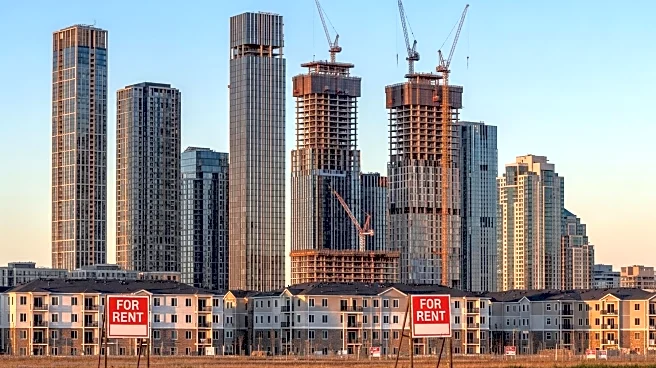What is the story about?
What's Happening?
Nashville's rental market is experiencing a decline in prices due to the addition of thousands of new apartment units since 2020. This influx has made the leasing market more competitive, particularly in downtown Nashville and surrounding areas like Antioch and Madison. According to a report by RentCafe, nearly 9,000 new units were built between 2020 and 2024 in the downtown area. The increased availability has led to concessions for renters, such as free rent for several months. Additionally, renting has become more affordable than buying a home in Nashville, with a report indicating it is almost 52% more expensive to purchase a home than to rent in the Nashville Metropolitan Statistical Area.
Why It's Important?
The decline in rental prices in Nashville is significant as it provides relief to residents facing rising costs in other areas, such as groceries and childcare. This trend reflects a broader shift in major U.S. metro areas where renting has become more cost-effective than buying a home. The affordability of renting over buying could impact the traditional path to homeownership and wealth-building, making it increasingly challenging for residents to purchase homes. This shift may influence housing policies and economic strategies in Nashville and similar cities.
What's Next?
As the rental market continues to adjust, potential renters may benefit from ongoing concessions and competitive pricing. The trend of renting being more affordable than buying could persist, influencing housing market dynamics and possibly prompting policy changes to address affordability and homeownership challenges. Stakeholders, including developers and policymakers, may need to consider strategies to balance the housing market and support residents in achieving homeownership.
Beyond the Headlines
The shift in the rental market may have long-term implications for urban development and demographic trends in Nashville. As renting becomes more attractive, it could lead to changes in population distribution, with more people opting to live in urban areas rather than suburban or rural settings. This could affect infrastructure planning, public services, and community development initiatives.
AI Generated Content
Do you find this article useful?













